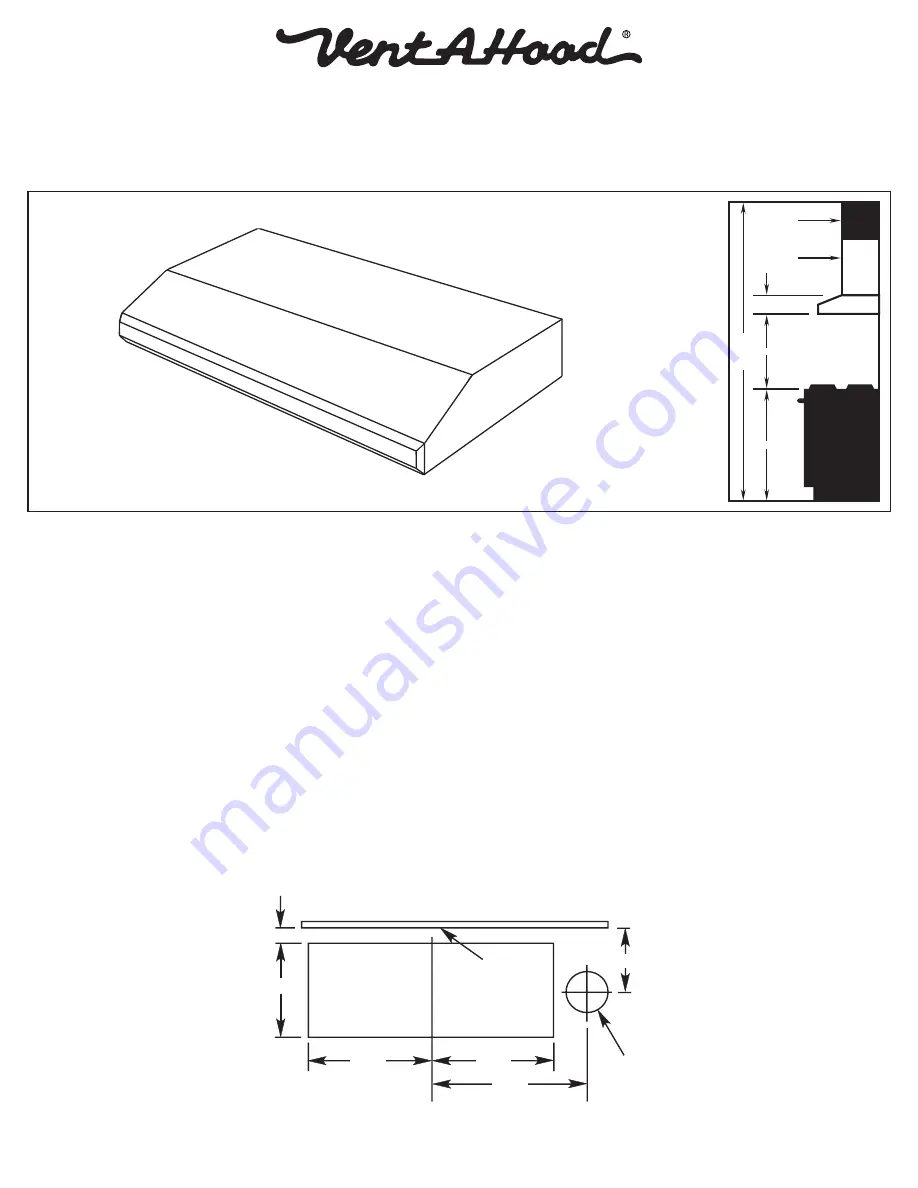
Page 3
L114A 0808A
36”
8’ Ceiling
21”-24”
6”
Soffit
Cabinets
Ceiling Cutout for Vertical Ducting
Viewed from Above
Back of Cabinet
Electrical
�⁄�"
3 ½"
5 �⁄�"
5 �⁄�"
6 ¼"
2 �⁄�"
CL
Installation Details
1) Read all instructions thoroughly before beginning installation.
2) When installing the SLH6-K under cabinet hood, it is recommended that the bottom edge of the hood be located no more
than 21” - 24” from the cooking surface. Exceeding recommended mounting height may compromise performance.
3) Inspect the underside of the cabinet for a flush mounting surface. If the underside of the cabinet is recessed, install
wood strips to provide a flush surface for the hood mounting screws to engage.
4) Determine whether the hood will discharge horizontally or vertically. The hood is shipped to discharge vertically but is
easily converted to horizontal discharge by exchanging the discharge adapter on top of the hood (4 screws) with the
discharge cover on the back of the hood (2 screws). Use duct tape to seal the discharge adapter and discharge cover
to the hood.
5) IF THE HOOD IS TO BE “BACK VENTED”, PROCEED DIRECTLY TO STEP 6.
Install the duct from the outside of the home down to the location of the hood exhaust outlet allowing room for the
VP521 transition on the top of the hood (if applicable). If a VP521 transition is used, install the duct down to the location
of the transition outlet plus 1”. This will allow the transition to engage 1” inside of the duct. Consult the connection
diagram (below) for further details on exhaust outlet placement.
Use duct tape to seal all joints. A complete listing of available Vent-A-Hood ducting materials is provided on the back
page of this instruction sheet.
Transition height: 3 1/4” x 10” duct will connect directly to the exhaust outlet of the hood. Optional VP521 transition
to 7” round (sold separately) is 7 1/2” tall.





